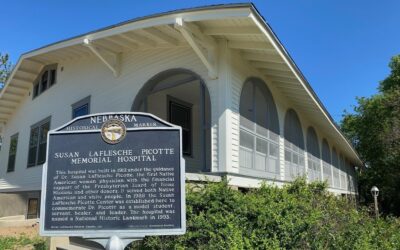In early Nebraska travel was more difficult and infrequent than it is today. The traveler often shared his experiences with stay-at-home friends and curious neighbors through the columns of a local newspaper. T. F. McCamant, for example, sent a brief account of his December 1871 trip by Missouri River steamboat from Omaha to Nemaha and Richardson counties in southeast Nebraska to the Central Union Agriculturist and Missouri Valley Farmer (Omaha), which published it January 1, 1872.
“Falls City, Richardson Co., Neb., Dec. 12th, 1871. Ed. Agriculturist: I left Omaha on the morning of the 5th, bound for Southern Nebraska, and arrived here at noon on the following day. . . . I remained a few hours in Brownville, and called on Mr. [J. D.] Calhoun, Editor of the Democrat, who proved himself, by the courtesy shown me to be a gentleman of the first-water. The Brownville & Ft. K. R. R. [Brownville, Fort Kearney and Pacific Railroad] is now graded some distance out from Brownville, and they are receiving iron and cars as rapidly as possible.
“The country between Brownville and this place is the finest I have seen in Nebraska,æRichardson county is third in population, and is probably as good a county as is in the State. Falls City has a population of about one thousand and is rapidly improving. The A. Neb. R.R. [Atchison and Nebraska Railroad] has been completed to this point about six months, and is now completed to Table Rock, twenty-five miles north-west.
“Coal has been discovered at St. Deroin, eighteen miles north-east of here, and a shaft is already being sunk. Wood is only five dollars a cord, and coal only costs seven dollars per ton. So far as improvements are concerned, we have but little idea of what a high state of cultivation Nebraska can boast, till we have seen Nemaha and Richardson counties. The Nemaha Valley Journal, of this city [Falls City, originally of Brownville], is an excellent paper, has a large circulation, and is one of the best, if not the very best paying paper in the State.”
McCamant’s only disappointment seems to have been the time and expense required to leave the city of Omaha before beginning the main part of his journey. He and the other passengers boarded the steamer by transfer boat where “for nearly two hours we had to wait in their cold and uninviting cabin, which looked more like a barn than a waiting-room. Never before did I realize what a swindle the Omaha Transfer is. I thought they would take every cent of my money before I could get out of sight of the city.”

T. F. McCamant traveled from Omaha to southeast Nebraska aboard a Missouri River steamer. From Benjamin F. Gue, History of Iowa from the Earliest Times to the Beginning of the Twentieth Century (1903).



